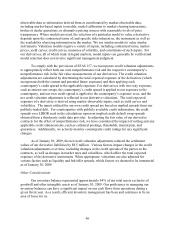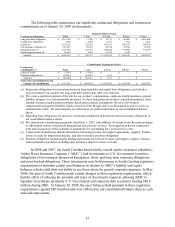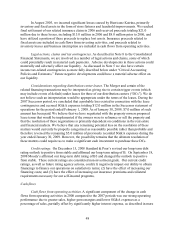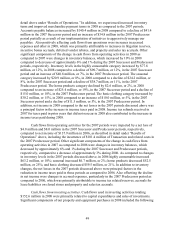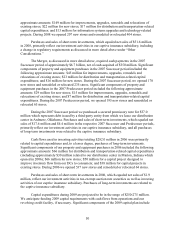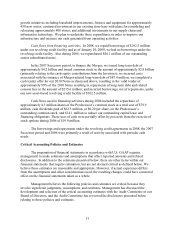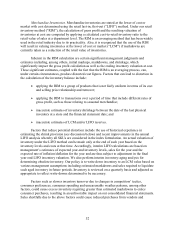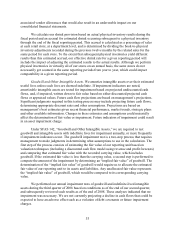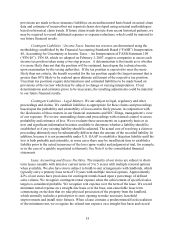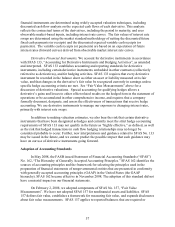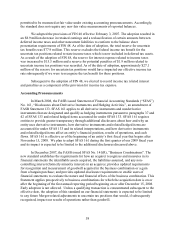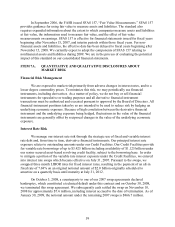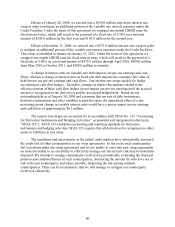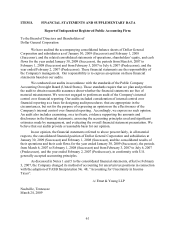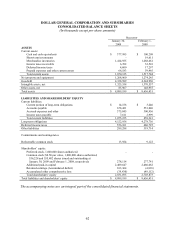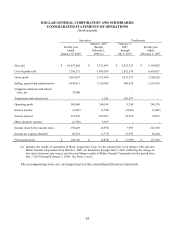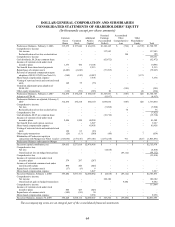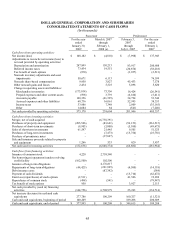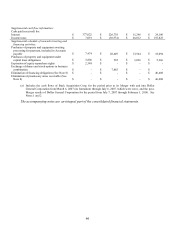Dollar General 2008 Annual Report Download - page 58
Download and view the complete annual report
Please find page 58 of the 2008 Dollar General annual report below. You can navigate through the pages in the report by either clicking on the pages listed below, or by using the keyword search tool below to find specific information within the annual report.56
the difference between the recognized rental expense and the amounts payable under the lease as
deferred rent. Tenant allowances, to the extent received, are recorded as deferred incentive rent
and amortized as a reduction to rent expense over the term of the lease. We reflect as a liability
any difference between the calculated expense and the amounts actually paid. Improvements of
leased properties are amortized over the shorter of the life of the applicable lease term or the
estimated useful life of the asset.
For store closures (excluding those associated with a business combination) where a lease
obligation still exists, we record the estimated future liability associated with the rental
obligation on the date the store is closed in accordance with SFAS 146, “Accounting for Costs
Associated with Exit or Disposal Activities.” Based on an overall analysis of store performance
and expected trends, management periodically evaluates the need to close underperforming
stores. Liabilities are established at the point of closure for the present value of any remaining
operating lease obligations, net of estimated sublease income, and at the communication date for
severance and other exit costs, as prescribed by SFAS 146. Key assumptions in calculating the
liability include the timeframe expected to terminate lease agreements, estimates related to the
sublease potential of closed locations, and estimation of other related exit costs. If actual timing
and potential termination costs or realization of sublease income differ from our estimates, the
resulting liabilities could vary from recorded amounts. These liabilities are reviewed periodically
and adjusted when necessary.
Share-Based Payments. Our share-based stock option awards are valued on an individual
grant basis using the Black-Scholes-Merton closed form option pricing model. The application of
this valuation model involves assumptions that are judgmental and highly sensitive in the
valuation of stock options, which affects compensation expense related to these options. These
assumptions include an estimate of the fair value of our common stock (as our stock is not
publicly traded), the term that the options are expected to be outstanding, an estimate of the
volatility of our stock price (which is based on a peer group of publicly traded companies),
applicable interest rates and the dividend yield of our stock. Other factors involving judgments
that affect the expensing of share-based payments include estimated forfeiture rates of share-
based awards. If our estimates differ materially from actual experience, we may be required to
record additional expense or reductions of expense, which could be material to our future
financial results.
Fair Value Measurements. We measure fair value of financial assets and liabilities in
accordance with SFAS 157, which requires that fair values be determined based on the
assumptions that market participants would use in pricing the asset or liability. SFAS 157
establishes a fair value hierarchy that distinguishes between market participant assumptions
based on market data obtained from sources independent of the reporting entity (observable
inputs that are classified within Levels 1 and 2 of the hierarchy) and the reporting entity’ s own
assumptions about market participant assumptions (unobservable inputs classified within Level 3
of the hierarchy). Therefore, Level 3 inputs are typically based on an entity’ s own assumptions,
as there is little, if any, related market activity, and thus requires the use of significant judgment
and estimates.
Our fair value measurements are primarily associated with our derivative financial
instruments and to a lesser degree our mutual fund holdings. The values of our derivative


